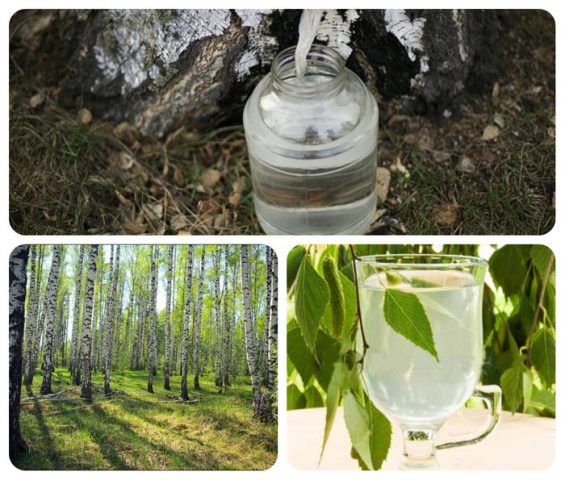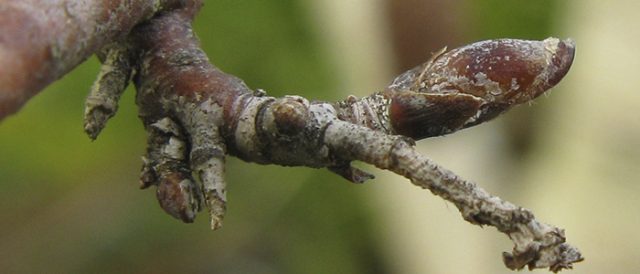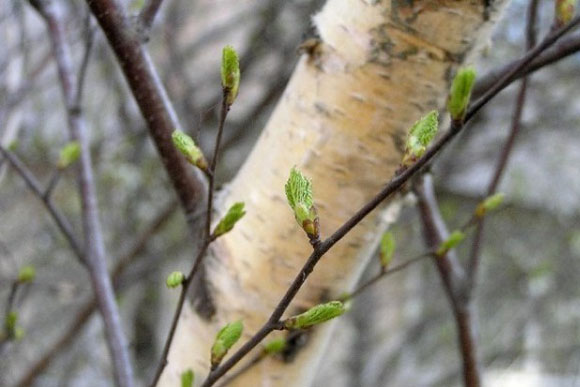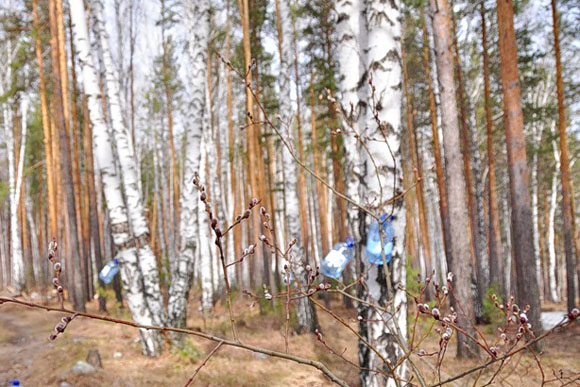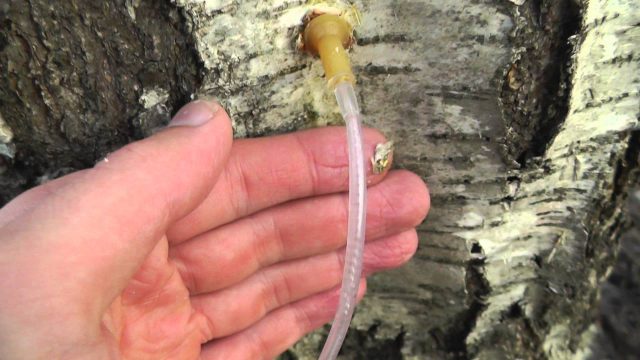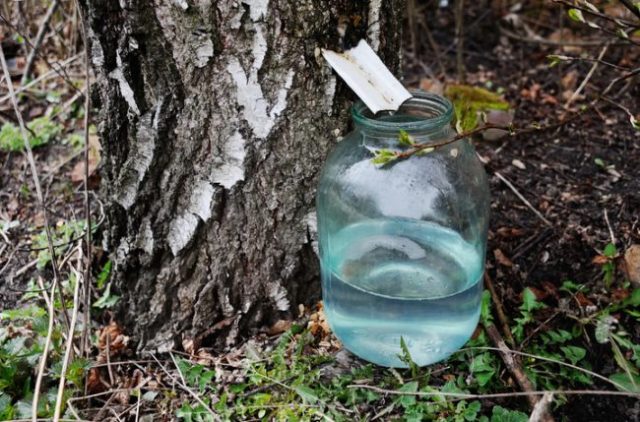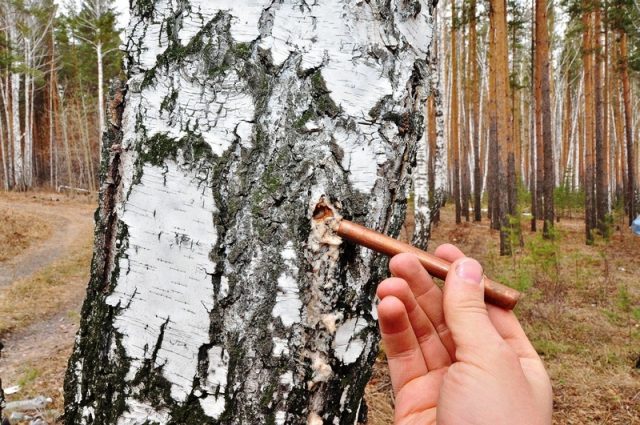Content
From the moment when the first spring sun is just beginning to warm up, many experienced hunters for birch sap rush into the forests to stock up on a healing and very tasty drink for the whole year. It seems that collecting birch sap is not difficult at all. Although this case, like many others, has its own laws, features and mysteries.
When to harvest birch sap this year
This question worries most of all beginners, those who have never been involved in this exciting sacrament - the collection of birch sap. But in nature everything is arranged quite simply. With the onset of real warmth, when the sun begins to bake in a non-winter way, the snows give up their positions, and during the day stable positive temperatures remain, a new spring life wakes up in the trees, including birches. The roots begin to revive after hibernation and drive the tree sap along with nutrients upward to transfer life-giving energy to the branches and awaken hitherto dormant buds on them. Therefore, the swelling of birch buds is one of the main criteria by which it is judged that it is time. It's time to start collecting juice.
When this happens specifically by dates, no one can predict for sure. Especially in recent years and decades, when the weather in each season can change so much that after the real, almost summer heat in March, suddenly everything suddenly stops and in April the harsh winter weather returns again with 10-15 degrees of frost.
In general, in Russia, for a long time, the time of collecting birch sap began approximately from the beginning of March and lasted until the beginning, middle, or even the end of May. Although in one particular region, the period for collecting sap from birches rarely lasts more than two weeks, and under unfavorable conditions it can generally last only a week. But Russia is a huge country, and if in the south the juice has long since departed, then in the north or in Siberia they have not even started harvesting it yet.
For a long time, the Slavs had a special day - April 11, which was considered the day of veneration of the birch. On this day, a holiday called Birch was celebrated and various rituals related to the glorification of birch and its gifts were carried out. It was believed that birch sap, collected in spring, on this day, has a particularly powerful healing power. It was necessarily given to the especially weak and sick, children, pregnant and lactating women. Most likely, this date was calculated for the middle zone of Russia, which, however, is confirmed by averaged climatic data. And if we assume that April 11 is the date according to the new calendar, then it turns out that the ancestors began to collect juice from birches from the end of March.
For the Moscow region and adjacent regions, these data are very close to the truth. Indeed, depending on the weather conditions, birch sap is collected in the Moscow region, starting from March 20, and ending closer to the middle, end of April, and 2021 is unlikely to be an exception to this rule.Often, the date of the vernal equinox - March 19/21 is called the starting point for the spilling of birches in the middle lane.
In the Leningrad region, the dates are shifted several weeks in advance. It is rare that local juice lovers go to stock up on it before mid-April, and usually finish after the May holidays.
In the Urals, especially in the south, approximately the same picture is observed as in the Leningrad Region. But in the middle and northern Urals, the dates may be shifted by a few more weeks. And birches wake up and begin to give out juice not earlier than the beginning, or even mid-May.
The same dates are typical for Siberia. Usually birch sap is harvested in this region, starting from the May holidays until the beginning of summer. Although in recent years, due to climate warming, the dates may be shifted to April.
Finally, in the Black Earth Region and in the south of Russia, it is possible to collect sap from birches from the beginning of March, and sometimes even in February.
There are basic signs that you can roughly understand that the process has begun and you need to go into the forest to get a life-giving drink:
- The average daily temperature exceeds zero, and the sun begins to bake like spring.
- Snow begins to melt intensively and on the most southern edges of it is no longer in sight.
- The buds on the birch begin to grow in size - to swell.
Sometimes, even with abundant snow cover, the sap begins to circulate intensively through the tree. You can try to watch the flooding of rivers and streams. If their level has risen significantly, then it's time to go to the forest and try to collect juice.
The very first liters of collected birch elixir turn out to be the most valuable, so it is best to come to the forest a little earlier than to be late. The most reliable test for the presence of circulating sap in a birch is to pierce the bark of the tree with a thin but sharp awl. If after that liquid appears in the hole, then you can start collecting it.
Is it possible to collect birch sap in May
If we are talking about the northern regions or about Siberia, where only in the last month of the calendar spring can we observe a massive snow melt and stable positive temperatures during the day, then it is May that is the main period for collecting birch sap. In other regions, at the very beginning of May or even earlier, young fresh leaves are already actively opening on birches, which means that the sap harvesting period is over.
Until what time can birch sap be collected
As already noted, the blooming of leaves on a birch is the main indicator that it is pointless to collect juice from it further. Not only will it be incomparably small, it will be thick, dark, cloudy and completely tasteless. Already at the first signs of bud opening (a bursting sticky shell and the appearance of the first rudiments of leaves), it is recommended to curtail the sap collection procedure if it is still happening near birches.
Is it harmful for birch to collect birch sap?
If you correctly collect birch sap, using reasonable technologies, suitable tools and timing, not to be greedy, observe the measure, then its collection will not bring any tangible harm to the tree. There are known trees from which sap was collected every spring for decades, and they continued to grow and develop successfully and only increase their rate of return of a healthy drink.
The tree will not be particularly damaged if you extract from it no more than 1-3 liters of birch sap in one season. The exact amount is difficult to determine, but there is a clear correlation between the age and size of a tree trunk and the amount of sap it can sap.If from medium trees with a diameter of 25-30 cm it is not worth taking more than 1-1.5 liters at a time, then the old, mighty birches may well give up to 3-5 liters per season without much harm to themselves. Thus, in order to get a large amount of birch sap, it is better to use several full-fledged healthy adult trees for this at once.
Which birches are best for saping
As noted earlier, not every birch is suitable for sap collection. There is no point in touching very young trees at all. And birches with a trunk diameter of less than 15 cm are not suitable for harvesting - they may not endure this procedure, and the juice from them does not differ in particular sweetness and transparency.
If a birch grove is located near a river or other water body, then it is advisable to choose trees for sap collection that are on a hill, away from the river. It is in such trees that the sugar content of the extracted drink will be maximum.
You should not use diseased trees for collecting sap or those that have significant damage to the bark, including traces of the barbaric collection of the drink in previous seasons.
It is best to find out in the nearest forestry about the places that will soon be cut down, and go straight there to collect the healing nectar. If you want to take advantage of the maximum opportunities for collecting juice, then you should start with the sunny edges. And as the trees in the depths of the forest warmer and thaw, move to the very thicket to collect.
How to properly collect birch sap
The sap flow is most intense during the warmest time of the day. Therefore, the most fruitful period for collecting sap from birches is from 11 to 18 noon. By nightfall, the juice sometimes ceases to stand out altogether. This is due to a drop in temperature, sometimes to negative levels, and a lack of solar heat at night.
What weather is birch sap collected?
For the same reason, experienced birch sap collectors advise to go to the forest only in clear and warm weather. Even in the old days, there was a belief that the juice collected in gloomy and rainy weather lost its strength and did not bring any benefit. It may be so, but the main thing is that in rainy and cold weather, the intensity of juice secretion is significantly reduced.
How to make holes correctly
The sap mainly circulates in the birch at the junction of the bark with the wood, so there is no need to make holes too deep. Even for the old mighty birch, it is quite enough to make a hole of 4-5 cm, and on average, a hole depth of 2-3 cm is enough to collect birch sap.
There is some disagreement about the best height to make holes. Most agree that it is most convenient to do this about a meter from the ground. Some, on the contrary, make holes very low, at a height of literally 20-30 cm, in order to collect the drink in containers on the ground.
Perhaps this is not too important, but it is important to make holes on the side of the trunk that faces south. This side is better warmed by the sun, and therefore sap flow on it is much more active.
There is a general rule of thumb for how many holes can be made in one tree. With a trunk diameter of 20 to 25 cm, only one hole can be made on a birch. If the diameter of the birch is 25-35 cm, then it is permissible to make 2 holes, and if 35 -40 cm, then 3.
But even on the oldest thick and powerful birch, it is not recommended to make more than 4 holes.
Various tools can be used to make the hole. A small hand or cordless drill is best. In this case, the diameter of the drill used can be from 4 to 8 cm, no more.
An angled chisel or even an ordinary thick nail may work. They will also need a hammer (to hammer in) and pliers (to pull out). As a last resort, you can get by with a small penknife.
You should not only use an ax or a chainsaw to extract juice! After all, the wounds inflicted by them can damage the tree so much that it cannot heal them and will soon be doomed to death.
Birch sap collection devices
Next, one of the devices for direct collection or, more precisely, drainage of juice should be inserted into the resulting hole.
With a dropper
To collect birch sap, the easiest way is to use the help of a medical dropper, which can be freely purchased at any pharmacy.
The hose adapter has an inlet diameter of about 4 mm so that you can easily match the drill to the appropriate size. Its very tip has an expanding base, so that it is easy to insert it tightly into a hole made in a birch. The other end of the transparent tube from the dropper is lowered into a container that is on the ground or screwed with a rope or tape to the trunk of a tree. At the same time, the juice from the birch runs freely and without any loss enters the prepared container immediately. To protect the juice from debris and all kinds of insects, you can pre-drill a hole in the lid of the container where the other end of the tube is inserted.
If several holes are drilled in a tree, then an adapter from a dropper is inserted into each of them, and the other ends are lowered into the same container.
Thus, up to 3-4 liters of healing nectar from one tree can be collected per day.
The video below shows in detail how to collect birch sap with your own hands using the above method:
With a straw
If you cannot find a dropper with hoses, then any other tubes will do for collecting juice. In its simplest form, these can be plastic cocktail straws. Or clear hoses from windscreen washers or other automotive supplies. Some folk craftsmen manage to adapt even electric cables for these purposes, having previously removed all the filling from them.
And the principle of operation itself remains the same as when using a dropper.
With a gutter
The most traditional way to collect birch sap is to use a birch bark groove, one narrow end of which is inserted into the hole, and from the other the sap flows into a prepared container. By the same principle, you can use almost anything, and a piece of a plastic corner, and even a ballpoint pen body cut in half, as long as not a single drop of the extracted precious nectar is wasted. And obediently would drain into the container standing below.
Using bags
There is another rather ancient way of collecting sap from birches. It is the most gentle on the condition of birch and causes minimal damage to the tree.
To do this, you need to find a birch with lower branches located at an accessible height. The end is sawed off from one of these branches so that the cut diameter is at least 1 cm. Then it is tilted down, placed in a tight plastic bag, which is carefully tied. And the branch itself is tied to the trunk so that the juice flows down from it.
For a day of such a collection, you can easily collect about 1-1.5 liters of birch drink.
How to cover birch after collecting juice
Those who have been collecting sap from birches for several years already know that in the first hours it can flow very intensively, and then the rate of its release slows down significantly. Birch, as it were, begins to "lick" the wound, to promote its overgrowth. It is not necessary at this moment, as many ignorant people do, to try to deepen or widen the hole.This will not lead to anything good. If the collected juice is not enough, then it is better to go to another tree and do all the above manipulations with it. But the treated tree must be helped, it must not be left with "open wounds". Indeed, through them, an infection can enter the tree and this will have a bad effect on its future fate.
The holes are best sealed with small wood cork pins that are planed in place. If you lubricate their inner surface with garden pitch, then soon the hole will overgrow itself and not even a trace of it will remain. As a last resort, in the absence of a garden varnish, you can use wax, plasticine or even moss with clay or earth. They can always be found nearby, here in the forest.
Where birch sap should not be collected
Birch sap is usually collected at a considerable distance from cities, especially large ones. It is best to do this in forests, which are located at a distance from large and medium-sized trunk roads. Do not do this in the vicinity of industrial areas or other objects that pollute the atmosphere.
Of course, trees growing directly in the city are not used for harvesting.
In general, it is prohibited by law to collect birch sap in dendrological parks and botanical gardens, in memorial or historical and cultural reserves, in places of mass recreation and in other specially protected areas. In addition, collection is prohibited on the territories of hospitals, sanatoriums, rest homes and other health care institutions.
When you can't collect birch sap
It makes sense to collect birch sap only at the beginning of spring, when it actively begins to circulate through the tree. In winter, the trees sleep, and in summer and autumn they need life-giving moisture themselves to ensure normal life. It is impossible to collect sap from birches during these periods of the year, as this can lead to the death of trees.
Responsibility for collecting birch sap
If the collection of birch sap is carried out in accordance with the basic rules, which were described in detail above, and in places where it is not prohibited by law to engage in such an activity, then no responsibility for these actions is provided. It is not for nothing that in spring, sometimes thousands of townspeople, and even rural residents, rush into the forests to collect the most healing elixir in order to improve their health and the health of their families. But in the case of collecting birch sap from trees growing in any of the protected areas listed above, the penalty for such actions in Russia is considerable. Therefore, it is better not to be lazy and find a suitable birch grove, away from protected areas, especially since this is not at all difficult to do in Russia.
Conclusion
Learning how to properly collect birch sap and every year to please your family with a priceless drink, especially in springtime, is not so difficult. But how much joy and benefit you can bring into your life thanks to this simple procedure.
